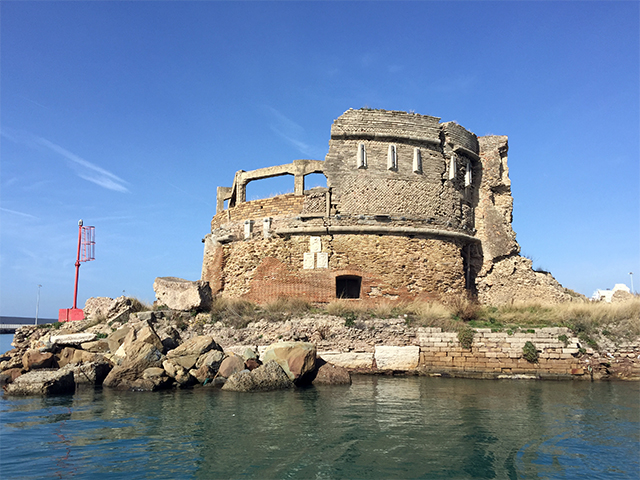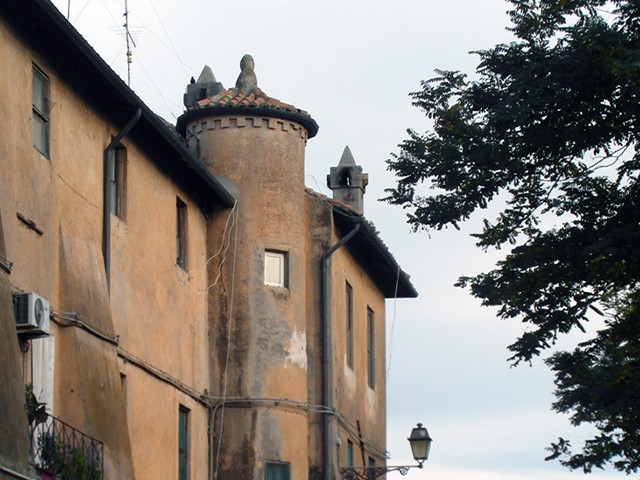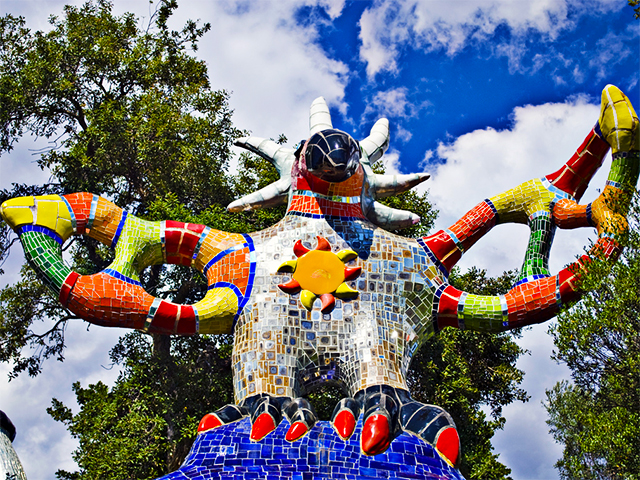What to See in Gaeta and surroundings: 10 Unmissable Places
Known as the "city of a hundred churches", Gaeta is a small town full of history, beaches and amazing views! Here's what to see...Known as the "city of a hundred churches", Gaeta is a beautiful sea town, at the border between Lazio and Campania, where thousands of tourists spend their holidays every year, especially in the summer season. Rich in history, but not very big, you can see it in a single day, or better in a weekend.
Before discovering the 10 places not to miss in Gaeta, let's start a tour around the history of the city.
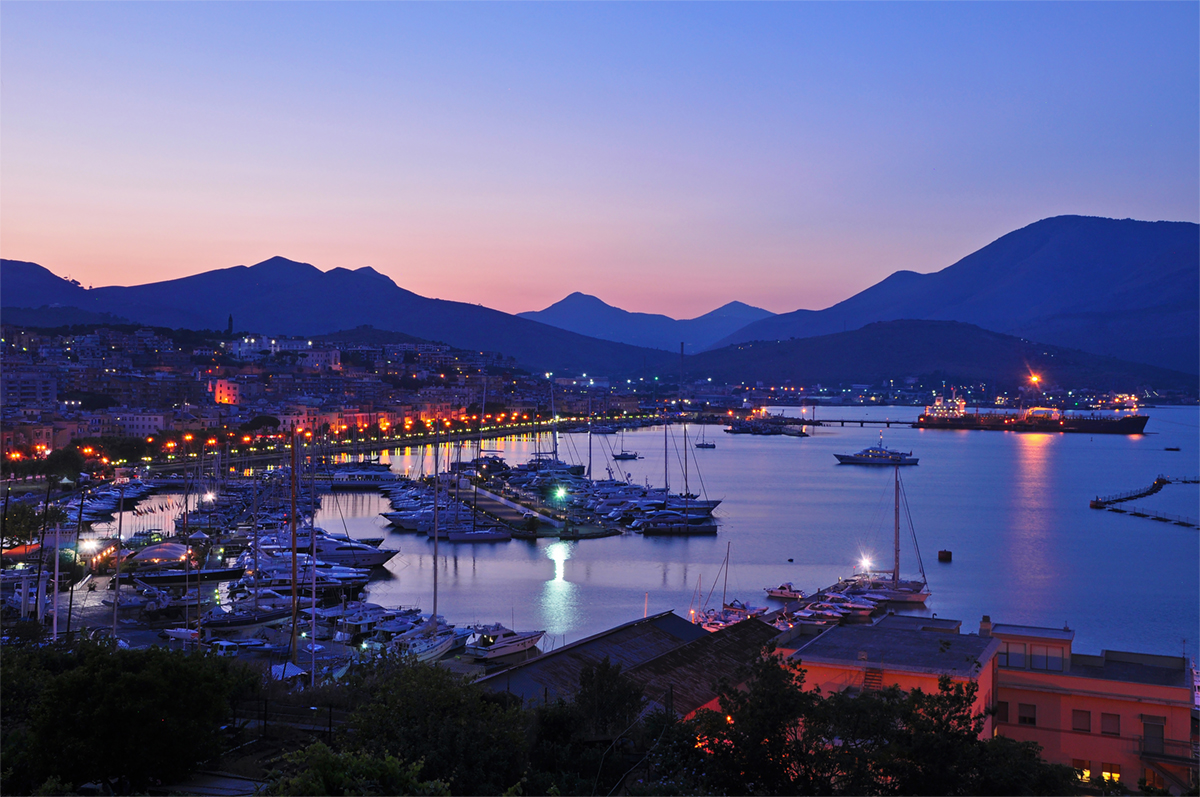
Night views of the port of Gaeta
A bit of history
In the past, Gaeta was already populated by the Aurunci when it passed under the influence of Rome and became one of the preferred destinations by emperors, consuls and rich patricians. After the decline of the Roman Empire the inhabitants had to contend with the countless invasions of the barbarians and Saracens.
Around the first half of 110, there was another difficult period for the city. Initially it was contended by Frederick II of Swabia and by the papacy, then the city became a domain of the Angevins and Aragonese, here hid Pope Pius IX after the proclamation of the Roman Republic in 1848 and it was at the center of one of the most important clashes for the proclamation of the Unity of Italy that ended on 13 February 1861 with the yield of Francis II of Bourbon. Even during the Second World War the strategic position of Gaeta played an important role in historic events.
For these reasons, we recommed a visit to Gaeta, not only for their beaches but also for their history.
Let's see, then, what to see in Gaeta, the 10 places not to be missed!

Gaeta in all its splendour!
1. Gaeta Vecchia, old town
The historic center of Gaeta, of medieval origin, is a must. Known as Gaeta Vecchia, it is a set of small streets and narrow alleys, characterized by aromas, colors and scenarios of old times. Inside Gaeta Vecchia there are also several pubs and restaurants where you can taste typical dishes.
But how to get there? We recommend you to walk (since it is a limited traffic area), crossing the Lungomare Caboto or passing through Via Annunziata and skirting the Sanctuary della Santissima Annunziata (which you must absolutely visit). You continue always straight on, passing in front of the headquarters of the Harbor Office and then up to the headquarters of the Guardia di Finanza.

Views of the medieval town and the port of Gaeta
2. St. Francis Church
After the historic center, you can reach by foot the famous St. Francis Church. This is probably one of the most beautiful churches of the city.
The Church was founded by the patron of Italy in 1222, at the foot of Monte Orlando. It was Charles II of Anjou who had it reconstructed some centuries after, and finally it was Ferdinand II of the Two Sicilies who ordered a radical restoration. From the church you can admire a breathtaking panorama!
To learn more about how to visit and how to get there, the history and the characteristics on the church, please click here.

St. Francis' Church
3. The Cathedral of Gaeta
The Cathedral is one of the "hundred churches", which is located inside the medieval area near the harbor. The church is dedicated to Mary Assumed into Heaven and from 995 also to the Saints Erasmo and Marciano. The cathedral, dating back to the Late Middle Ages, is divided into seven naves and is supported by 6 rows of Roman columns, still visible today. In the basilica, Giovanni Coniulo, monk of Montecassino originating in Gaeta, was crowned Pope Gelasio II (1118-1119).
The impressive bell-tower shows many artistic influences in the west with Muslim elements. The bell tower, inside, is terminated with an octagonal element and four small cylindrical towers covered by domes.

Bell-tower of the Cathedral of Gaeta
4. Via Indipendenza and surroundings
Walking away from Vecchia Gaeta, another place to visit on foot is Via Indipendenza and surroundings. Another characteristic location, where time seems to have stopped. Beautiful houses, balconies full of plants, clothes hanging everywhere, shops, stalls and a lot of tradition. Ladies still sell their cultivated products, sitting with their baskets of fruit. In the Christmas period, there are the famous lights of Gaeta to call younger and older to the streets.
Near Via Indipendenza you can visit some churches such as the church of Porto Salvo, in the neighbourhood with the same name, where the procession every second sunday of August dedicated to the Madonna di Porto Salvo starts. Or the famous church of San Giacomo, built by the fishermen at the end of the 16th century, damaged during sieges and bombings and then reconstructed at the end of the 20th century. Finally, the Chiesa degli Scalzi or SS. Cosma and Damiano and two hundred meters further, the parish of Old Cosma, razed to the ground during the Second World War and never rebuilt.
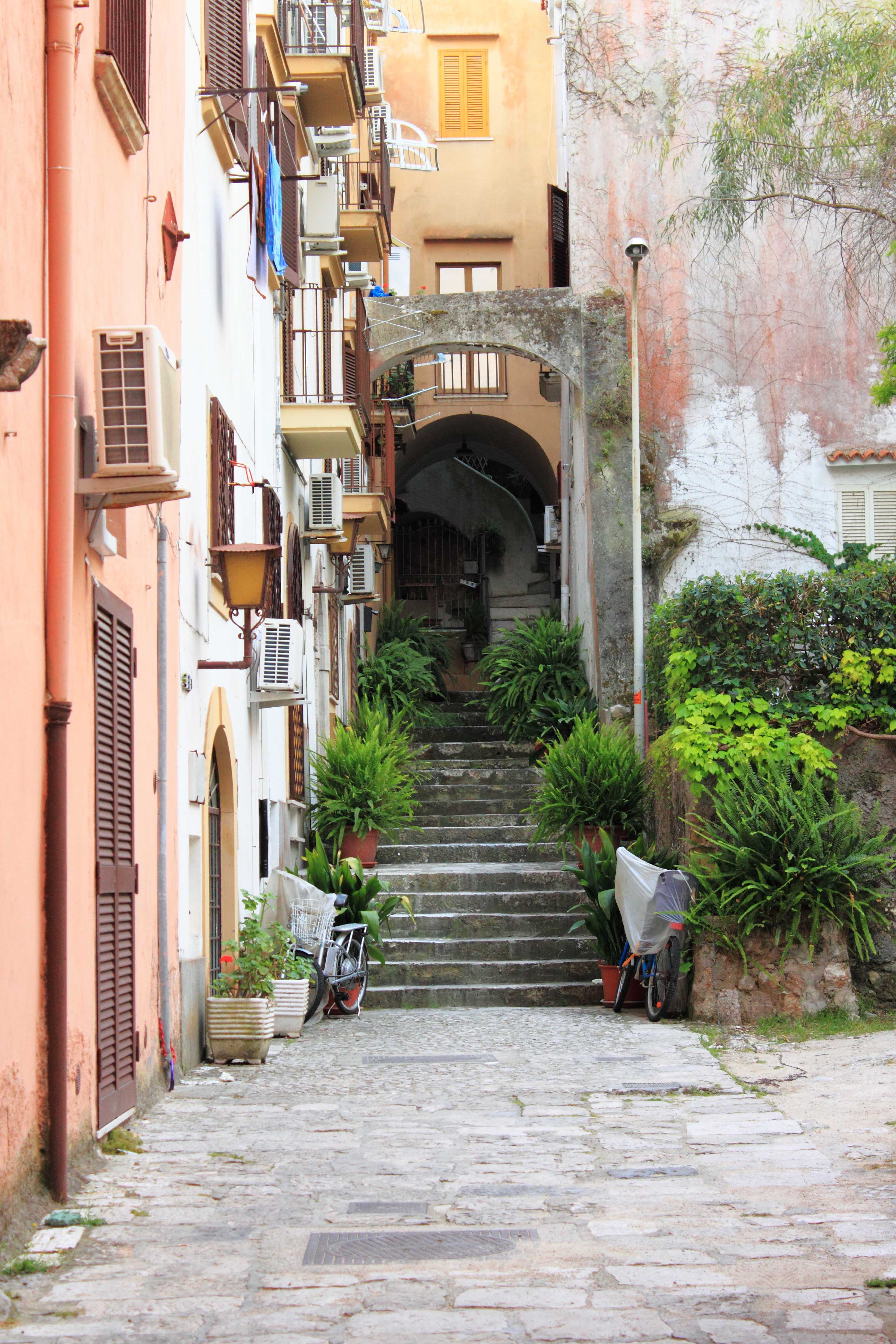
Alleys of Gaeta
5. Church of San Giovanni a Mare
Another stop to do in the central area of the city is the Church of San Giovanni a Mare, also known as the Church of San Giuseppe. This is a true hidden gem in the heart of Gaeta. Built on an ancient sacred Christian place destroyed by the earthquake of 1213, the church was built using some decorative elements like the columns, all unequal among them, while between the 15th and 17th century it was enriched with frescoes and baroque decorations removed after the restoration of 1928.
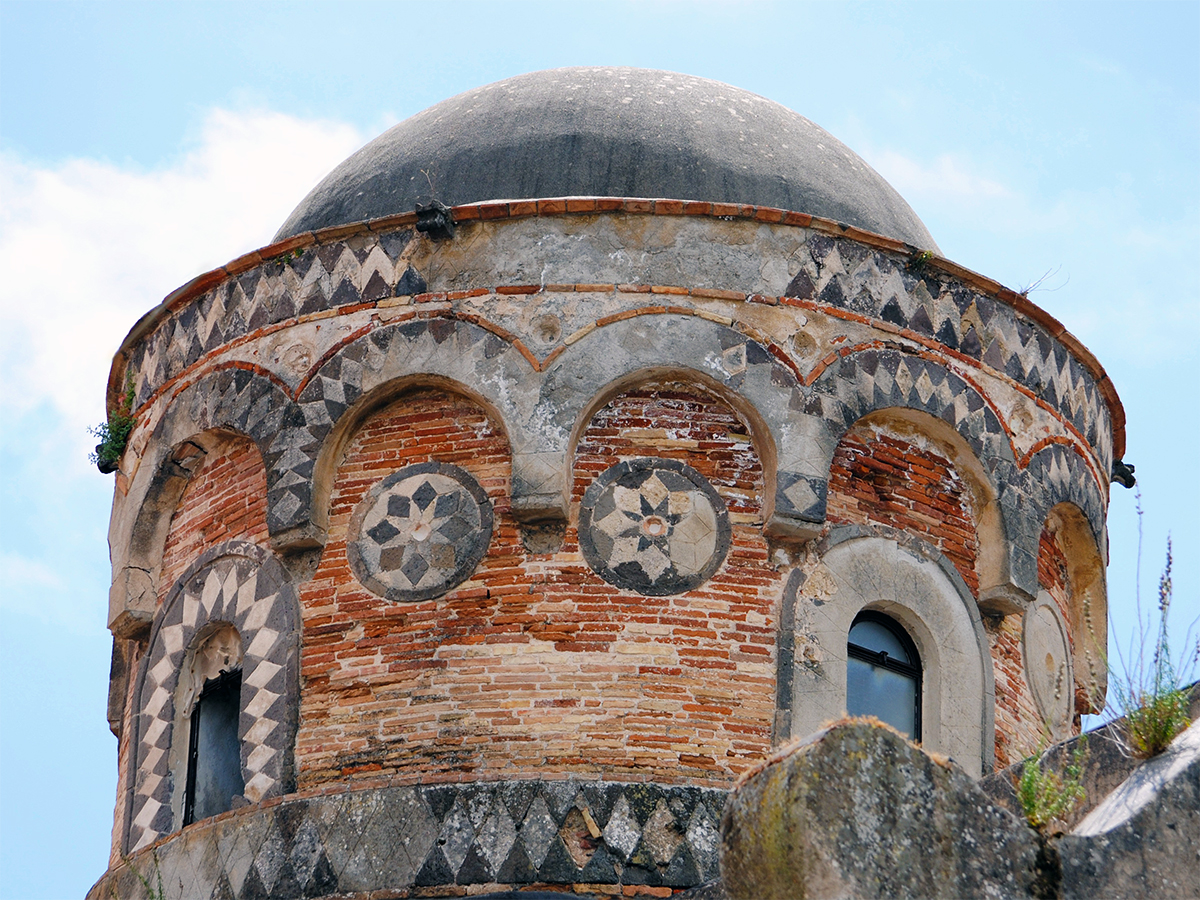
Dome of the Church of San Giovanni a Mare - Gaeta
6. Castello Angioino-Aragonese
Not to be missed the Castello Angioino-Aragonese, one of the symbols of the city. Some sources suggest that the castle of Gaeta was built in the 6th century, during the war against the Goths. Safer sources date the construction back to the 12th century, when Frederick II of Swabia, to defend their territory during the war between the Guelphs and the Ghibellines, came to Gaeta to give start to the construction of some fortifications, including the castle.
Today, the building is divided in two parts: the oldest part dating back to the Angevin period and the more modern part built by Charles V of Hapsburg.
In the past, it was also the seat of the military prison. Today, the two buildings of the castle are occupied in part by the Caserma Mazzini of the Guardia di Finanza and partly entrusted to the University of Cassino, that wants to spend its spaces as seat of the faculty of seafaring disciplines.
Bear in mind, though, that the Castle of Gaeta is only open in certain periods of the year. For more information, we advise you to contact directly the Tourist Information Center of Gaeta.

View of the Castello Angioino-Aragonese in Gaeta
7. Split Mountain and Turk's Cave
Maybe the most representative place of Gaeta is the Split Mountain and Turk's Cave.
The split mountain is the most western side of Mount Orlando, where the Sanctuary of SS. Trinity was built, also known as the Sanctuary of the Split Mountain.
According to a legend, when Jesus died on the cross, the Jerusalem temple veil was torn causing three deep cracks into the rock of what today is known as Split Mountain of Gaeta.
The Sanctuary of SS. Trinity was built in the 11th century by benedictine monks on a slope of Mount Orlando. The appearence it has today, though, dates back to late 17th century and combines elements from Napoletan and Spanish baroque styles.
In this Sanctuary have prayed many popes, kings, bishops and saints such as Pope Pius IX, Bernardino of Siena, Ignatius of Loyola, Saint Leonard of Port Maurice, Paul of the Cross, Saint Gaspar del Bufalo and St. Philip Neri.
According to the legend, St. Philip Neri lived in the insides of the Split Mountain finding shelter on a stone pallet, known today as "St. Philip Neri's bed".
To the left of the Church is the Turk's Cave. A heavenly place reachable by going down 300 steps. Once at the end of the stairs you can admire the natural spectacle of the groove that plunges into the sea. Unfortunately today we cannot descend to the bottom for safety reasons.

Beautiful Turk's Cave in Gaeta
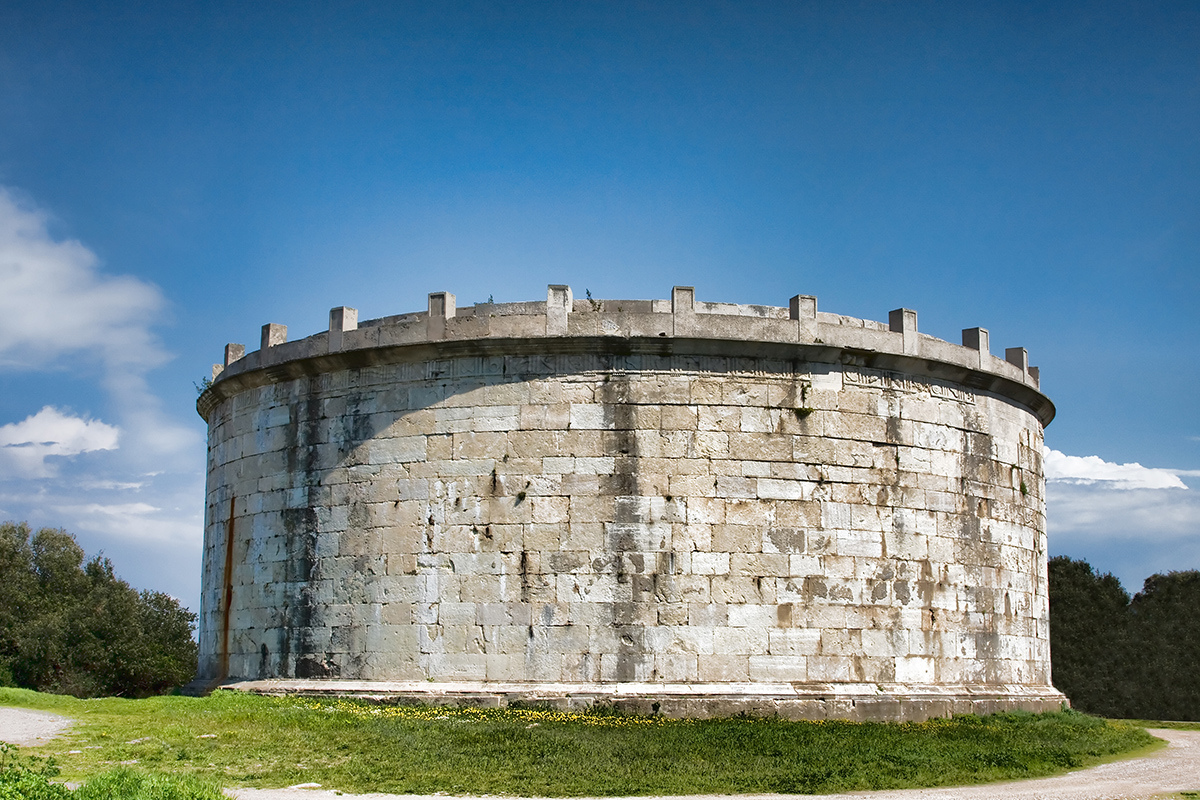
Lucio Munazio Planco Mausoleum
8. La Polveriera e il Mausoleo
After visiting the Split Mountain and the Turk's Cave, we advise you to continue your visit in the area of Mount Orlando.
Following the routes of the Park of Mount Orlando you can visit the Armouries or the Mausoleum of Lucio Munazio Planco erected around 22 B.C. An excellent opportunity for a nice walk!
For more information about itineraries you can visit the official site.
9. Beaches of Gaeta
A wonderful 10-kilometer-long stretch of beach, spaced out only by small inlets and rocky peaks. The common singularity to all these beaches is the presence of light and very fine sand, clear water and surrounded by thick Mediterranean vegetation.
Some of the unmissable beaches in Gaeta are:
- Serapo Beach is the main beach of Gaeta. Close to the city center and the Medieval district.
- The small Fontania Beach is located slightly North-West to Serapo Beach, reachable by foot or swimming.
- Beach of 40 Remi (40 Oars) is a small beach that can be reached only by boat or swimming.
- Ariana Beach, several times awarded Blue Flag for its clear waters. Characterized by thin sand, crystalline sea.
- Arenauta Beach is also known as Beach of the 300 Steps, because the only way to get there is going down a staircase formed exactly by 300 steps.
- San Vito Beach is right after the small private bay of Grand Hotel Le Rocce and the Tower with the same name on top of the hill.
- Bay of Sant'Agostino, with 2 km of costline, it is the longest and also most frequented beach of Gaeta.
To learn more about the beaches in Gaeta, refer to the article 7 beaches in Gaeta.
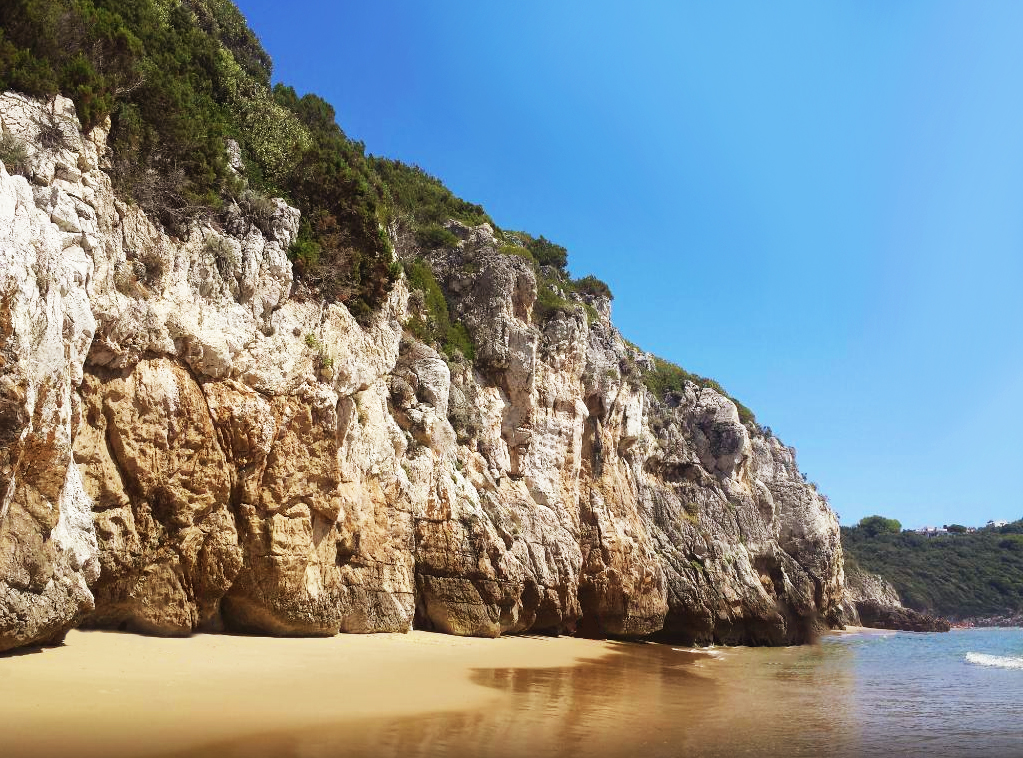
Arenauta Beach is also known as Beach of the 300 Steps (Gaeta)
10. Surroundings: Sperlonga
Sperlonga is 15 km away from Gaeta. If you have some spare time, it is worth going there for the day. It is a small town in the southern part of Lazio, which offers really lovely beaches. Not only, Sperlonga possesses one of the most beautiful villages of Italy and the Villa and the Cave of the Roman emperor Tiberius.
In addition to the excavations of the Villa, inside of the site it is possible to visit the local Archaeological Museum, hosting the statuari groups that adorned the city. The Grotta di Tiberio, instead, is a great rocky natural cavity open on the Tyrrhenian sea, surrounded partly by an extremely charming small stretch of beach.
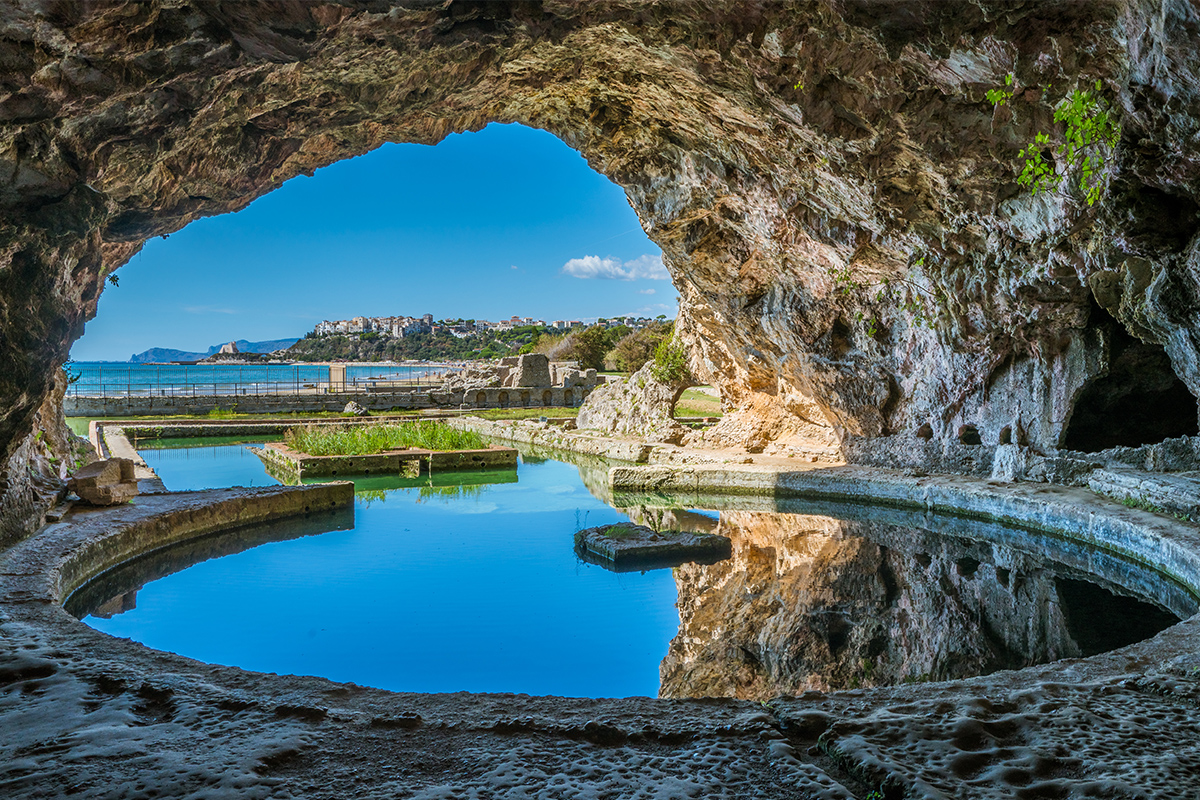
Grotta di Tiberio - Sperlonga
Click here, to watch the video of "What to See in Gaeta and surroundings".



 PORT MOBILITY CIVITAVECCHIA
PORT MOBILITY CIVITAVECCHIA









